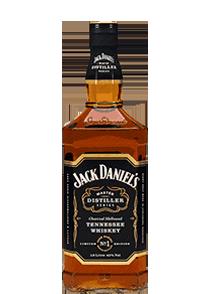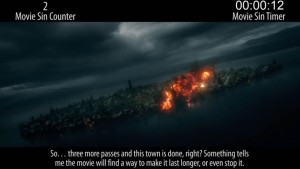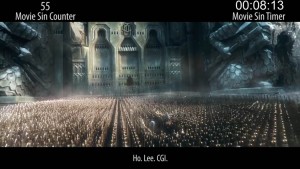REVIEW: THE HOBBIT – THE BATTLE OF THE FIVE ARMIES
THE HOBBIT: BATTLE OF THE FIVE ARMIES REVIEW
By Robert Maber
VERDICT: THIS MOVIE REMINDS ME OF ONE OF THE STAR WARS MOVIES….ONE OF THE PREQUELS.
NOTE: I am aware of the issues surrounding Peter Jackson and his directing of The Hobbit films. I am aware of how he went into this film relatively blind with nowhere near as much pre-production done to satisfy his specific vision for The Hobbit films. However, it ultimately falls to the combination of the director, his cast and crew, as well as the studio(s) spearheading the project to create the best possible film or series of films. In this respect, Peter Jackson did the best he could, but the ultimate failure in my opinion goes to Warner Brothers for still rushing the project out when it was not fully at its best. Unfortunately, I must review the film as was released, not simply an idealized version of what could have been. With that being said, my official review of the film The Hobbit: the Battle of the Five Armies will now begin.
After the finale of the 2003 critically-acclaimed The Lord of the Rings: The Return of the King, there was a trilogy of films created that were overall very much admired and enjoyed by casual moviegoers, movie critics both new and old, as well as fans of the original books by J.R.R. Tolkien. Fast forward about 9 years to the release of The Hobbit: An Unexpected Journey.
Keep in mind: The Original Lord of the Rings Trilogy was released in the same general timeframe as the Star Wars prequel films. For those of you who don’t remember what those were:
And now that I showed that to you, here’s the next logical thing to go for:
Now that that’s been established, back to the actual review. The reason for the reminder of the prequels is simply to indicate how at least to some degree, the filmmakers behind The Lord of the Rings had to have been mildly aware of what happens when you create a follow-up trilogy to an incredibly popular and beloved trilogy of films which spawned a franchise, but then nonsensically create shameless and unnecessary plugs to market to those outside of the main target audience and needlessly create segues, easter eggs or references that directly attach to aspects or storylines of the original trilogy. One would think that logically, due to the exposure to Star Wars: Episode I, II, and III, the filmmakers would know both what to do and what not to do when creating prequel trilogies. Long story short, as one can probably tell from the start of this review, the filmmakers didn’t learn their lesson. Just as Attack of the Clones was the worst offender for Star Wars, Battle of the Five Armies is likewise the worst offender of the Tolkien lore. The film drags much longer than it should have, sequences occur that make future events in The Lord of the Rings feel out of place, references to The Lord of the Rings are shoehorned into the dialogue unnecessarily, and the CGI goes from being very well executed throughout The Lord of the Rings to looking like a bunch of moving paintings that had markings of bright light and bright paint splotches randomly spattered all over the movie screen. In case it wasn’t abundantly clear before now, I DID NOT LIKE THIS MOVIE.
Basically the entire opening sequence of Smaug destroying Lake Town is out of place and inconsistent with the rest of the film. This set piece could have easily been at the end of Desolation of Smaug and could have wrapped up that film relatively well. Unfortunately, the execution of this sequence is pretty sloppy. Smaug is clearly capable of reducing Lake Town to ash, as evidenced by one of the first few opening shots of the film.
(This shot. Give it maybe 8-9 more passes and the town is reduced to ash.)
But for some reason he engages in an almost Legend of Zelda style boss battle against Bard. For the record I say “almost” Legend of Zelda style boss battle for a reason; at least in legend of Zelda, survival requires some form of skill and actual thought on the side of the player to determine how to win. In this instance, it’s a victory for Bard due to terrible writing and somehow hitting Smaug’s video game weak point with a lucky shot of a black arrow. Seriously. Smaug could’ve killed Bard FIRST, or at least made a considerable effort to do so. That way, if Bard were still to come out on top the dramatic tension would have elevated the sequence to a higher level than what was presented on screen. Also, leave it to Peter Jackson to have Smaug go out like a Disney villain or even a boss from any Mario Bros. game since maybe Super Mario 64. After being hit by the Black Arrow, what does Smaug do? Simple. He flies around in the air, doing some stupid dance of pain, writhing in agony in an overly dramatic manner, then takes his last breath as he reaches a talon up towards the sky (i.e. the camera) which then zooms in on Smaug’s eye as the last essence of his life fades away. This then leads to Smaug falling straight down onto the mayor of Lake Town. I truly think this could have been handled in much better fashion.
Next we come to the whole sequence involving the Necromancer at Dol-Guldur (you know, that one other eerie-looking, black old castle in the middle of very evil-looking setting in Middle-Earth). Sauron for some reason decided that after subjecting Gandalf to Sauron.gif in the last movie, Gandalf should just be hung up in a cage somewhere all while watching the Necromancer’s army leave the castle to fight at the Lonely Mountain. In Battle of the Five Armies, Galadriel arrives to save Gandalf by using some variant of Lv. 5 Super Elf Shockwave Power Plus to incapacitate the orc that is JUST NOW TRYING TO KILL Gandalf for some reason. But hey, Gandalf is played by Sir Ian McKellen and it’s established that he lives to be in The Lord of the Rings trilogy, so apparently he gets a pass here. But the “fun” doesn’t end here, folks. Next the Necromancer summons ghost versions of the Nazgul from Lord of the Rings to end it all. Thankfully Elrond and Saruman suddenly appear to aid her and Gandalf. Slight problem: how did they know to arrive exactly at this moment to help defeat the Nazgul ghosts? Answer: by the power of Peter Jackson, Lord and Wizard of Convenience of Middle-Earth. In one final show of force, the spirit of the Necromancer himself – i.e. Sauron – arrives via his eye of flame teleporter to verbally torture everyone about how the world will end and the time of the Orc has come. So how is he stopped? Simple. Galadriel reaches deep within herself to go Super Saiyan Elf God Lv. 7.5 to “banish” Sauron back to the abyss from whence he came. And no one ever worried about Sauron again…..until 60 years later when everyone is suddenly surprised that Sauron is returning. This is an instance where I think the Necromancer side plot, as was presented, didn’t serve the Hobbit films a great deal. If they were to use it, I believe it should’ve been trimmed down a fair amount so as to not distract from the journey of Bilbo and discovering the One Ring. It still would have worked with the Necromancer as a puppet master orchestrating the orcs to claim the Lonely Mountain. Ultimately this is another instance where the execution could have been much better.
After the Necromancer side plot is completed the film attempts to focus up and go back to the main conflict around the Lonely Mountain. After the removal of Smaug and the dwarves and Bilbo enter the Lonely Mountain to take stock of the gold, Thorin is found coming down with, wait for it….dragon sickness. Not a “sickness of the mind” as was explored and discussed in An Unexpected Journey, but a totally new and unrelated phenomena. The “sickness of the mind” is how Bilbo describes the overall corruption that overtakes Thorin’s grandfather after becoming blinded by greed due to a strong love of gold. If Battle of the Five Armies indicated that the greed experienced by Thror is also what Thorin was feeling, there could have been a nice exploration into how Thorin could evolve past the old ways of the dwarves, to not give into temptation and greed but instead rule as a just and fair king. But that’s too logical, because the two sides have to start out as enemies in a real estate battle before teaming up against Sauron.
The battle itself can be easily summarized by the following picture:
(The white text says it all.)
Compare this to the Battle of Pelennor Fields in The Return of the King. Wide sweeping shots of the battle were interwoven with personal, close-up shots of who the true good guys were amongst the chaos and carnage. In the battle for the Lonely Mountain, this even balance isn’t nearly as present. Large black masses clash with blurred golden-brown masses and other black-gray masses. This is then coupled with giant slightly blurry CGI trolls and blurry CGI burrowing, earth-eating worms that for some reason choose not to devour the ground upon which the good guys are standing and win the battle outright.
To and to all of this, Peter Jackson created a forced comic relief element to the film in the form of the Mayor of Lake Town’s assistant, henceforth referred to Jar Jar discount Grima Wormtongue. On multiple occasions, Jar Jar discount Grima Wormtongue takes up far more screen time than he should have been allotted and has scenes where he pulls a “think of the children” moment to take up a position of authority and claim the gold for himself, or scenes where the is so desperate for gold he stuffs most of it down the front of his shirt and makes himself look like he is a….well-endowed elderly individual. It was one of those parts of the narrative that simply should have been left on the cutting room floor instead of ending up in the finished product.
Speaking of parts of the narrative that should not have been in the finished product, the entire Tauriel-Kili the dwarf love interest as well as ALMOST EVERYTHING WITH LEGOLAS should have been removed. The relationship is executed poorly and adds nothing to the overall story (mostly since Kili has no qualities to him that really set him apart from any of the other 12 dwarves). Most moments involving Legolas feel as if they were ripped from a video game. During the battle for the Lonely Mountain Legolas fights an orc captain on the side of tower that Legolas toppled by making a troll charge headfirst into it and dislodging it. Once the battle ends, the tower begins to crumble and fall. So how does Legolas survive this? Simple. He eats a super mushroom off camera adding to his jumping powers and performs super jumps on every falling stone to magically reach a safe place. Moments like this make most of the film feel as if there is no true tension and that it plays out almost like an extended Saturday morning cartoon special.
Overall, this film did nothing to compensate for how the trilogy of The Hobbit films measured up to the quality of the previous The Lord of the Rings films. The effects looked sloppy, the writing was not up to par, and the narrative was stretched out far longer than it should have been. I give props to the excellence of Martin Freeman, though unfortunately not even he can save this.
SCORE: 0.6 OUT OF 5




Leave a Reply